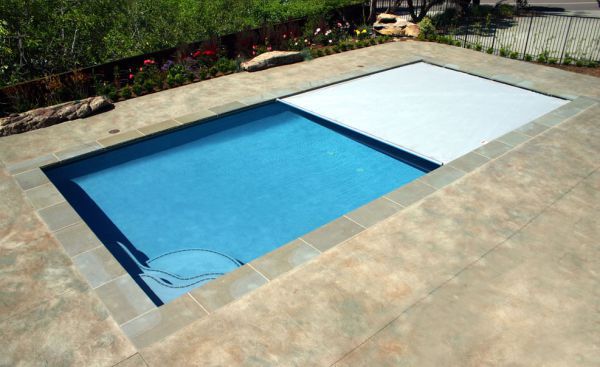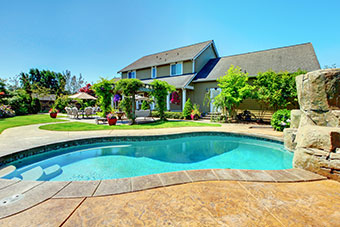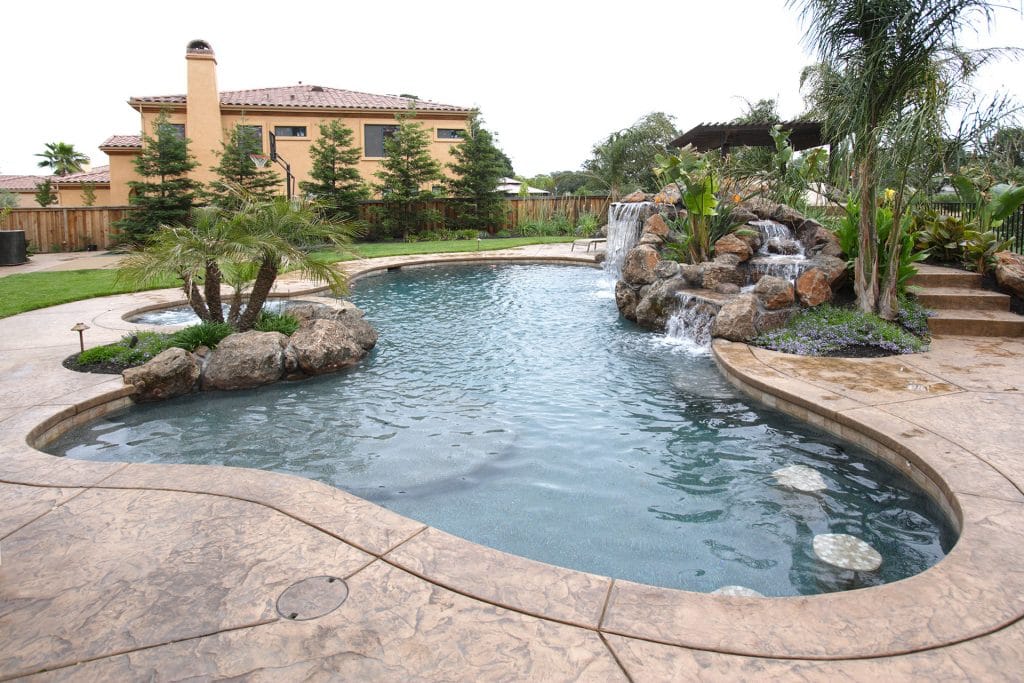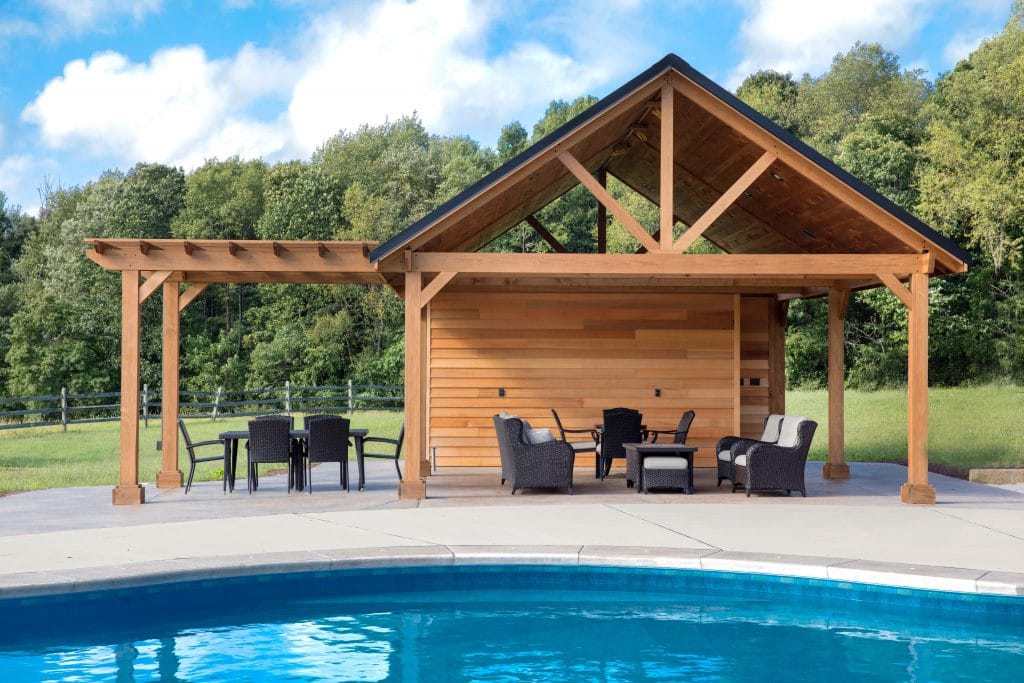When you’re looking for ways to slash your monthly energy bill, several things often come to mind. You cut back on how much you run your HVAC system. You’re more careful about turning lights off when you leave the room. You look for cracks to seal and protect against drafts. But perhaps some of the greatest energy savings aren’t even inside your home.
Your pool could be costing you more money than you realize. Your pool pump runs on electricity, along with non-solar pool heaters. All this extra electricity costs money, so it makes sense to include your pool when it comes to energy cost-cutting strategies.
What Does it Cost to Run a Swimming Pool in Texas?
When you’re thinking about the ongoing costs of your swimming pool, there are four main factors involved:
- The pool pump (which circulates water to filter it and evenly distribute chemicals)
- The pool heater (optional but popular to extend the use of your pool)
- Chemicals (to maintain healthy water)
- Ongoing maintenance (to preserve the integrity of your pool)
Of these costs, only two are directly related to your energy costs. Ongoing maintenance indirectly affects your energy consumption, since it includes cleaning your pool. A cleaner pool can put less stress on your pump, which may help to keep energy costs low.
This means the majority of your energy expenses fall to your pump and heater. The type, size, and age of your pump and heater can impact how much they cost to run. Also, the frequency of which they operate will reflect on your bill – the more often they run, the more it costs you.
In addition, the size of your pool will also affect how often your heater and pump have to run to keep up with demand. Smaller pools mean both of these tools will run less often to produce the desired results.
There are lots of ways to reduce your energy usage while still being able to enjoy your pool. Here’s an in-depth look at some of the best tips for creating an energy-efficient swimming pool:
1. Choose an Energy Star-Related Pool Pump
Energy star ratings carry a lot of weight when it comes to efficiency. These ratings apply to a variety of appliances, from refrigerators to dishwashers to washing machines. They also apply to pool pumps.
According to Energy Star, rated pool pumps may use up to 70% less energy than standard pool pumps. Each year, this could mean as much as $280 in savings for a two-speed pump and $340 in savings for a variable speed pump. Over the lifetime of the pump, this could put an extra $2,000 or more in your pocket.
Savings like these outweigh the cost of installing a new pool pump. Plus, less energy used is a favor to the environment at large.
As an added bonus, energy-efficient pool pumps are also much quieter than non-energy efficient ones!
2. Right-Size Your Pool Pump
Speaking of pool pumps, they come in all sizes and capacities. When it comes to energy efficiency, bigger is not better. The bigger the pump, the more power it uses and the more it costs to run. They’re also more expensive to maintain.
Likewise, you don’t want to choose a pool pump that is too small for your swimming pool. Your pump won’t be able to work efficiently and may constantly be running as a result as it tries to keep up.
The best practice is to work with a professional pool company to right-size your swimming pool pump.
3. Use a Solar or Automatic Pool Cover
Do you have a pool heater? If so, chances are you are wasting a lot of energy due to heat loss. The majority of heat loss in a pool (as much as 95%) is due to water evaporation from the surface. When you lose water, you need to refill your pool, which means your heater will need to run to heat the new water.
You can prevent pool water evaporation by using a pool cover. Many homeowners only use a pool cover during the cooler months, but you may find it beneficial to use it during warm months too, since the weather is hot and evaporation may occur more quickly.
A solar pool cover is a favorite choice because it traps the sun’s rays and reduces demand on your pool heater. They help to reduce water loss, which also bodes well for your water bill. And as a bonus, solar pool covers may also reduce the amount of chemicals you need, which can also lower your total cost of pool ownership.
Another option is to install an automatic pool cover. Pool covers can be a hassle since they’re so large and often take two people to cover the pool properly. Automated pool cover systems can protect your pool with the push of a button. Plus, when you’re ready to dive in, your pool can be uncovered in seconds. These covers protect against evaporation and may even be more effective at insulating your pool than a solar cover.
4. Lower the Temperature of Your Pool Heater
Your pool heater thermostat works much like the one inside your home. The lower the thermostat during the winter, the less heat your system needs to produce. And the less it runs, the more money you save.
This same concept can be applied to your swimming pool heater. When you lower the temperature, it doesn’t have to work as hard to heat your pool and maintain its temperature.
Think about how often you use your pool during times of the year when you need to heat it. If you only use it once a week, it makes sense to lower your heater’s temperature when you’re not using it. Even lowering your thermostat by 8 to 10 degrees during “down times” can help you save on your energy bills.
Also, if you are planning a vacation or will be out of town for an extended period, it might be a good idea to lower your pool heater until you return. You won’t be needing it and can avoid paying money to heat water you won’t be swimming in.
5. Choose a Dark Finish
The color of your pool can have a lot to do with how well it absorbs heat. Darker colors absorb and retain heat better than lighter colors. This is an important consideration when you are installing a new pool. However, you can also upgrade an existing pool to accommodate a darker finish and increase your energy savings.
6. Keep Your Pool Clean
A clean pool doesn’t just look nice. It may also help you lower your energy costs. This is because leaves and other debris can get caught in your pool’s filter, pump, and plumbing. When your system gets clogged, it can force your pump and other components to work harder than they need to. They become less efficient and must work longer to do the same job.
You can avoid this problem by cleaning your pool frequently. Remove as much debris as you can with a net or pool vacuum so it doesn’t end up in your pool’s system.
It’s also best practice to maintain your pool’s cleaning system. Even cleaning systems require cleaning every now and then. This gives you the opportunity to remove debris and buildup that may have slipped through the cracks so you can keep your system working like new. Most pool builders offer maintenance services like this and can do a thorough cleaning on your behalf.
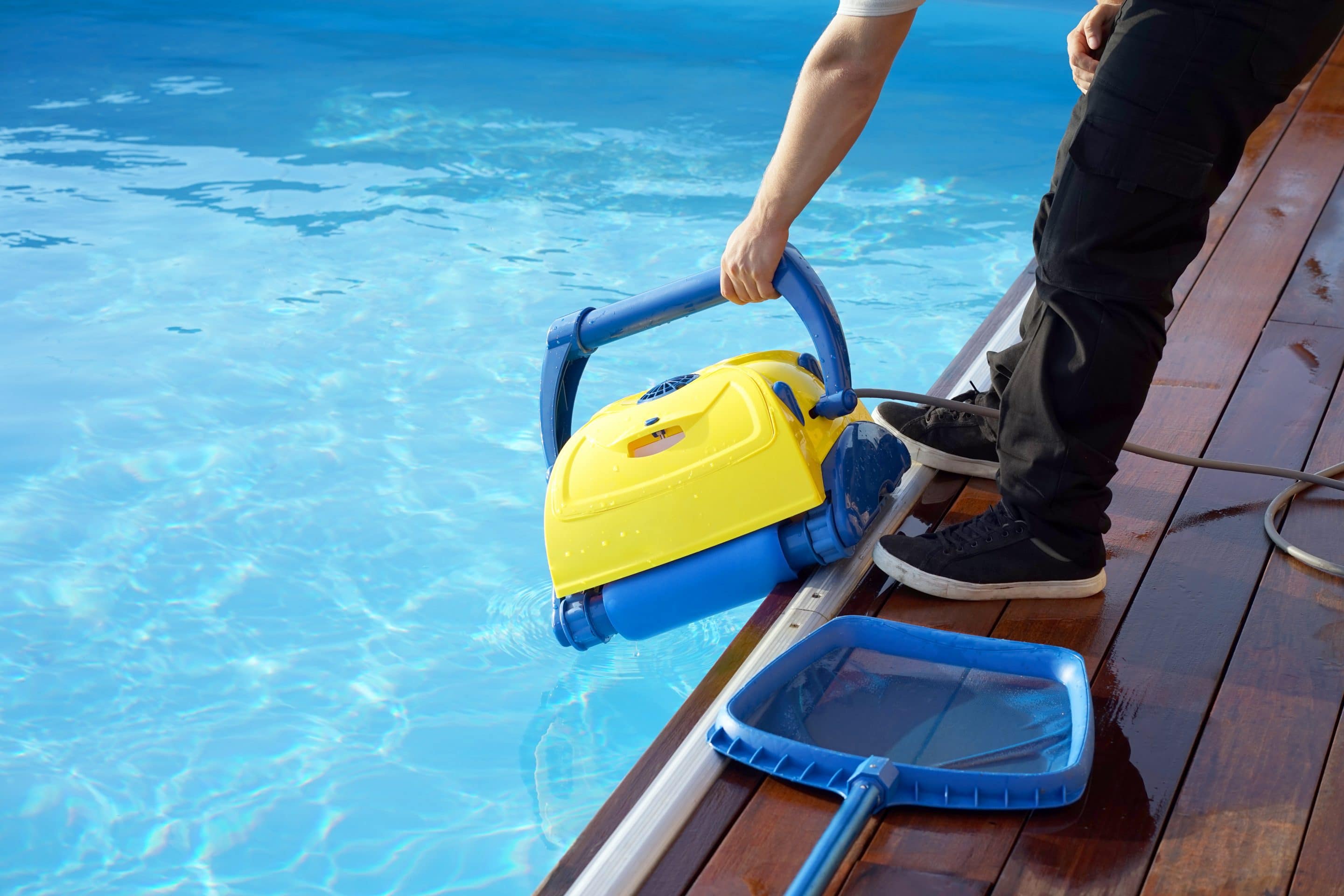
7. Replace Your Electric Pool Heater with a Solar Heater
If you are still using an electric heater to warm your pool water, you may want to consider the advantages of a solar pool heater. Instead of electricity, a solar heater uses energy from the sun to operate.
A solar pool heater is cost-competitive with gas and heat pump pool heaters. However, the energy savings is what tips the scales in their favor. They also tend to last longer than other heater options, so you can increase your ROI. Many Texas homeowners make their money back within 2-7 years, according to Energy.gov.
There’s another advantage of using a solar heater compared to no heater at all: an extended swim season. Even in an environment with hot summers and warm springs and falls, many Texans only swim for about 3-4 months out of the year because the water is too cool to swim for the rest of the year.
A solar heater combats this issue because it continually heats your pool water, regardless of the weather around it. This means you can enjoy more days in the pool and get more from your pool investment.
8. Invest in Pool Landscaping
While many pool owners consider landscaping as an afterthought, your pool’s surroundings can actually help you save on energy costs. For example, some evaporation is caused by wind, which can increase your energy consumption. This is true even with just a very light breeze!
That’s why it’s common to see windbreaks installed around swimming pools. A windbreak can be a row of trees or shrubs, or even a solid fence. The goal is to protect your pool from wind to reduce evaporation. Windbreaks should be installed around the perimeter of your pool, and high enough and close enough so that they don’t increase the amount of wind traveling over the water.
9. Switch to LED Pool Lighting
One way to reduce energy costs is to trade your existing lighting for energy-efficient LEDs if you have pool lighting. LEDs use less energy, provide ample lumens, and come in a variety of colors and styles. Some can even be customized to create cool effects while you swim.
In addition to lighting installed inside the pool itself, you can also swap out any landscape lights you’re using to enhance your pool experience. When you use outdoor lighting while you swim, that lighting contributes to your energy bill. Even better, an LED bulb usually lasts up to 50 times longer than a comparable incandescent bulb, which means you’ll have to change your lighting less often.
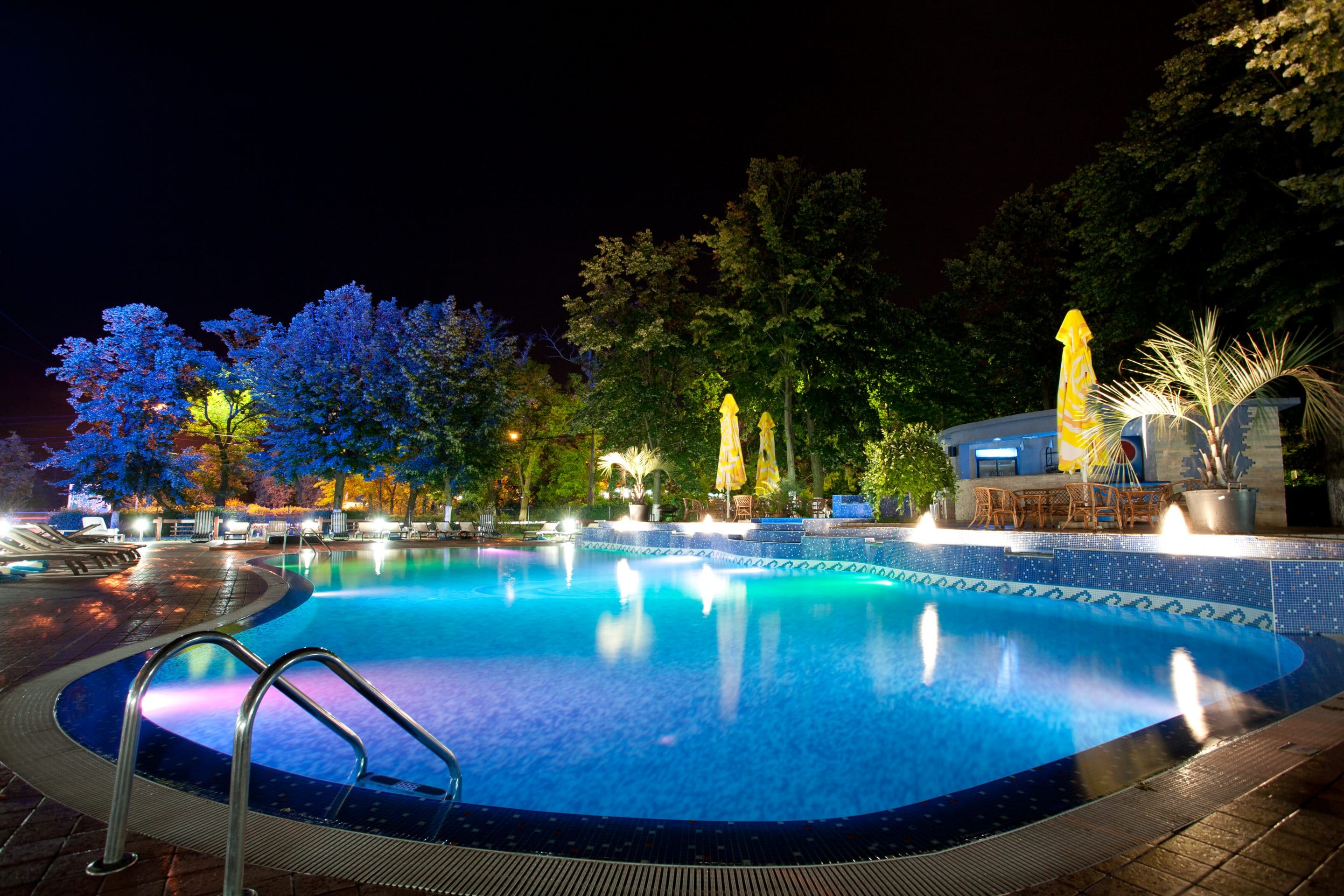
10. Time Your Energy Usage
Your home’s energy demands fluctuate throughout the day. For example, if you work outside the home, the energy demands between 9 am to 5 pm are likely quite low. Only the main essentials are running, like your refrigerator. When you come home from work, demand usually rises because you’re cooking dinner, washing dishes, doing laundry, and using lighting. When it’s time for bed, your energy demand fades again since you’re not active within your home.
Timing your pool pump to match energy demands can work in your favor. When you have too many things using electricity at once, you end up paying a premium. Try to run your pool system when things are quiet at home, such as the hours of 8 pm to 10 pm.
Plus, if you have a variable speed pump, you can easily run it at night. These pumps are quieter and won’t keep you and your neighbors up at night.
To help with this process, you can install automatic timers to run your system when energy demands are lowest. This takes the guesswork out of the process while helping you optimize your energy use.
11. Use a Larger Filter
The size of your pool filter may have a lot to do with how much energy your pool uses. The finer the filter, the more water resistance it has. Cartridge filters tend to be the best when it comes to water resistance. This allows water to flow more freely through the filter, which means less strain on your pool pump and therefore less energy used.
Your local pool experts are the best resource when it comes to choosing the right filter. If you’re unsure if you have the best option for your pool, consult with the experts to learn more about your options.
The Advantages of an Energy Efficient Swimming Pool
Many pool owners are motivated to reduce their pool energy use as a means of saving money. Even a reduction of $20 a month can add up quickly, especially if you plan to live in your home for many years. That $20 turns into a savings of $240 a year, and $1200 in five years!
But being energy efficient has other benefits, too
Save Water
Water isn’t just a vital resource, it’s also an expensive one. Much of a pool’s heat is lost through the surface due to evaporation of the pool water. But when you cover your swimming pool when not in use, you’re not just reducing the work on your pool heater. You’re also protecting your pool water from radiation and evaporation, which means you’ll need to top off your pool less often. This means savings on your water bill and your energy bill!
Reduce Energy Waste
Wasting energy isn’t just a waste of your own money. Many people don’t think about what it takes to create energy in the first place. If everyone were to do their part to reduce energy consumption, less energy would need to be created because less would be wasted. This results in cost savings for everyone.
Earn Tax Incentives
Becoming more energy-efficient benefits the environment, so much so that there are usually rebates or other financial incentives available when you make the switch. Rebates and tax advantages can lower your total out-of-pocket costs for an energy-efficient pool, helping you see an ROI on your investment faster.
Hot Tubs Can Be Energy-Efficient, Too
While these tips and best practices apply directly to swimming pools, many can also extend to help you improve the efficiency of your hot tub. In Texas, it’s common for homeowners to own both, either separately or integrated (also called spa pools or “spools”).
Reducing the thermostat, using a hot tub cover, and keeping your hot tub clean and free of debris means your systems have to do less work to achieve the desired results. Ultimately, this means energy savings for you!
It’s Never Too Late for an Energy-Efficient Pool
If you’re considering adding a new swimming pool to your backyard, the best practice is to build your pool with energy efficiency in mind. Starting from scratch allows you to choose energy-efficient pumps, heaters, and other products from the start so you can keep the total cost of pool ownership as low as possible.
However, if you already have a swimming pool, you can still make energy-efficient changes whose benefits you can enjoy for years to come. Changing out a pool heater, pump, or other feature can make a huge financial difference over time.
At Splash Pools, we love the environment just as much as we do a well-built swimming pool. If you’re looking to cut your pool energy costs, contact our team to explore your equipment options and best practices today!

